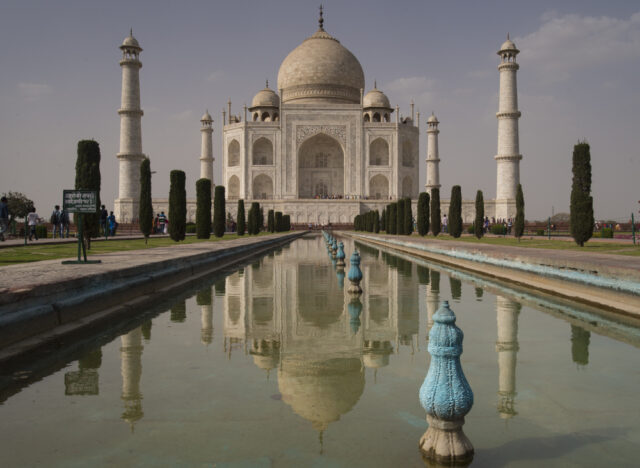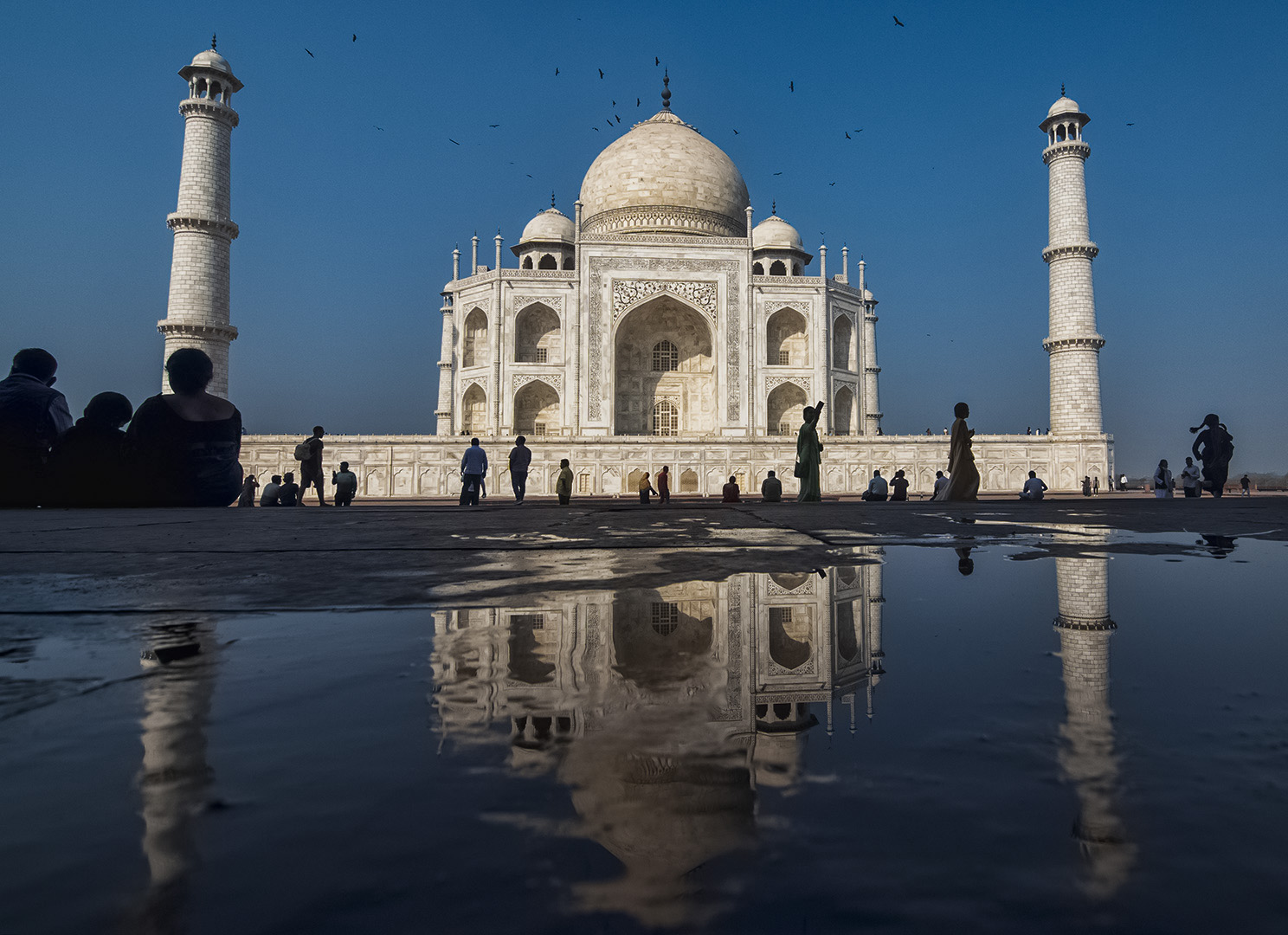Agra, home to the world-famous Taj Mahal and a hub of historical significance, is one of India’s most visited tourist destinations. With millions of visitors annually, both domestic and international, the tourism industry plays a vital role in the city’s economy. In today’s digital age, website development is a crucial tool for supporting and expanding Agra’s tourism industry, helping businesses reach a global audience, enhance customer experiences, and drive sustainable growth.
Here’s how website development plays a pivotal role in supporting Agra’s tourism industry:

1. Increasing Accessibility for Global Tourists
A well-designed website makes Agra’s tourism offerings more accessible to travelers from all over the world. By developing multilingual, mobile-friendly websites, tourism businesses—whether they are hotels, travel agencies, or tour operators—can attract visitors who are researching destinations online. Key benefits include:
- Multilingual Support: Agra attracts visitors from diverse countries. Offering websites in multiple languages ensures non-English speakers can access and understand local travel information and services, making Agra more inviting for international travelers.
- Mobile Optimization: With most travelers using smartphones to search for accommodations, book tours, and find local attractions, having mobile-optimized websites ensures seamless browsing experiences and higher booking rates.
2. Showcasing Agra’s Rich Cultural and Historical Offerings
Agra is more than just the Taj Mahal—it boasts a wealth of monuments, heritage sites, and local crafts. A well-developed website can highlight these attractions, giving tourists a full picture of what Agra has to offer. Website features that support this include:
- Virtual Tours: Interactive websites can offer virtual tours of places like Agra Fort, Fatehpur Sikri, and Itimad-ud-Daulah’s Tomb, allowing potential visitors to preview destinations before their visit.
- Photo Galleries and Videos: High-quality visuals of historical sites, local crafts, and cultural experiences can significantly influence a traveler’s decision to visit. Websites that incorporate engaging multimedia content are more likely to attract tourists.
- Cultural Insights and Blogs: Providing information about Agra’s history, culture, and events through blogs and articles helps create a deeper connection with potential visitors, encouraging them to explore more of the city.
3. Simplifying Online Bookings for Tourists
In today’s fast-paced world, convenience is king. Website development for tourism businesses in Agra can streamline the booking process, offering visitors a smooth and hassle-free experience. Key features include:
- Online Booking Platforms: For hotels, tour operators, and travel agencies, offering real-time booking systems integrated into their websites allows tourists to easily book accommodations, transportation, or tours with just a few clicks.
- Secure Payment Gateways: Integrated, secure payment solutions provide peace of mind to customers, encouraging them to complete their bookings online.
- Dynamic Pricing and Special Offers: By incorporating dynamic pricing, tourism websites can display real-time rates, seasonal discounts, and package deals, incentivizing tourists to make reservations directly through the website.
4. Enhancing Agra’s Tourism Marketing Efforts
Website development plays a central role in marketing Agra as a top travel destination. By implementing SEO (Search Engine Optimization) strategies and online marketing campaigns, tourism businesses can increase their visibility, attract more tourists, and compete globally. Here’s how:
- Search Engine Optimization (SEO): A website optimized for search engines can rank higher in Google and other search results for keywords like “Taj Mahal tours,” “Agra travel packages,” or “best hotels in Agra.” Higher visibility in search engines drives organic traffic to the website.
- Content Marketing: Regularly publishing blogs, travel guides, and customer testimonials on the website helps create valuable content that tourists are searching for, driving traffic to the site and boosting engagement.
- Social Media Integration: Websites integrated with social media platforms like Instagram, Facebook, and YouTube allow businesses to leverage social sharing and increase exposure. For instance, tourists who visit the Taj Mahal may share their experiences, encouraging others to visit.
5. Supporting Sustainable and Responsible Tourism
Agra is facing challenges related to over-tourism, such as pollution and the preservation of heritage sites. Websites can play a role in promoting sustainable tourism practices by educating visitors about responsible behavior and offering eco-friendly options. This includes:
- Promoting Sustainable Travel Options: Tourism websites can feature sustainable accommodation and tour providers that focus on eco-friendly practices, such as using renewable energy or limiting plastic waste.
- Encouraging Off-Peak Visits: By highlighting the benefits of visiting Agra during the off-season, tourism businesses can help distribute footfall more evenly throughout the year, reducing the pressure on popular sites like the Taj Mahal during peak periods.
- Conservation Efforts: Websites can also raise awareness of local conservation efforts aimed at protecting Agra’s heritage sites. This could be done by promoting partnerships with local NGOs or offering visitors ways to contribute to preservation efforts.
6. Providing a Personalized Experience for Tourists
One of the significant advantages of modern website development is the ability to provide personalized experiences for users. By utilizing Artificial Intelligence (AI) and data analytics, tourism businesses can offer tailored recommendations and content to visitors based on their preferences. Personalized features can include:
- Customized Travel Itineraries: Visitors can input their preferences (e.g., historical tours, cultural experiences, luxury stays), and the website can generate a customized travel plan based on those inputs.
- AI Chatbots for Customer Support: AI-powered chatbots can answer visitor queries, suggest hotels or restaurants, and assist with bookings, offering 24/7 customer support for tourists planning their trip to Agra.
7. Building Trust and Credibility for Tourists
Tourists are more likely to trust businesses with a professional online presence. A well-designed, user-friendly website with positive reviews, testimonials, and certificates of excellence helps build credibility, which is crucial in the tourism industry. Features that enhance trust include:
- Customer Reviews and Testimonials: Websites can showcase reviews from previous visitors, giving potential tourists confidence in booking accommodations or tours.
- Certification and Partnerships: Websites that display certifications (e.g., government tourism approvals) or partnerships with travel platforms like TripAdvisor enhance credibility and reassure tourists about the legitimacy of the business.
8. Fostering Local Business Growth through E-commerce
Tourism websites in Agra can also support local artisans, handicraft businesses, and service providers by integrating e-commerce platforms into their websites. This allows local businesses to sell products such as Petha, leather goods, or marble handicrafts online, extending their reach to global customers. By integrating e-commerce with tourism websites, Agra’s businesses can benefit from increased sales and exposure.
Conclusion
Website development is an essential tool for supporting and expanding Agra’s tourism industry. From increasing accessibility for global visitors to simplifying bookings, enhancing marketing efforts, and promoting sustainable tourism, a well-designed website can help local tourism businesses thrive in a competitive global market. As the digital age continues to influence how travelers make decisions, tourism businesses in Agra must embrace website development to remain relevant and successful, ensuring a positive impact on both the local economy and the city’s cultural heritage.


No responses yet